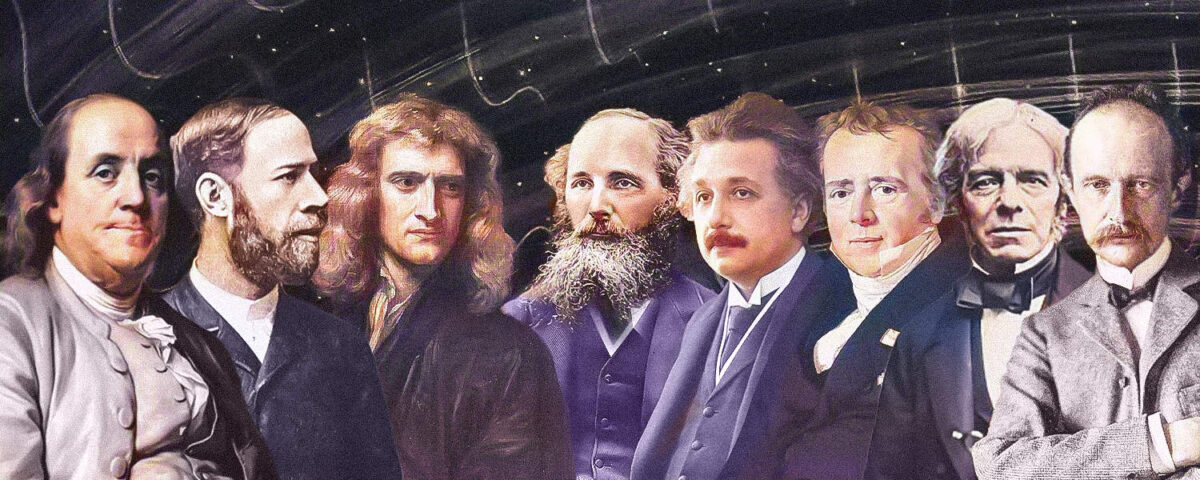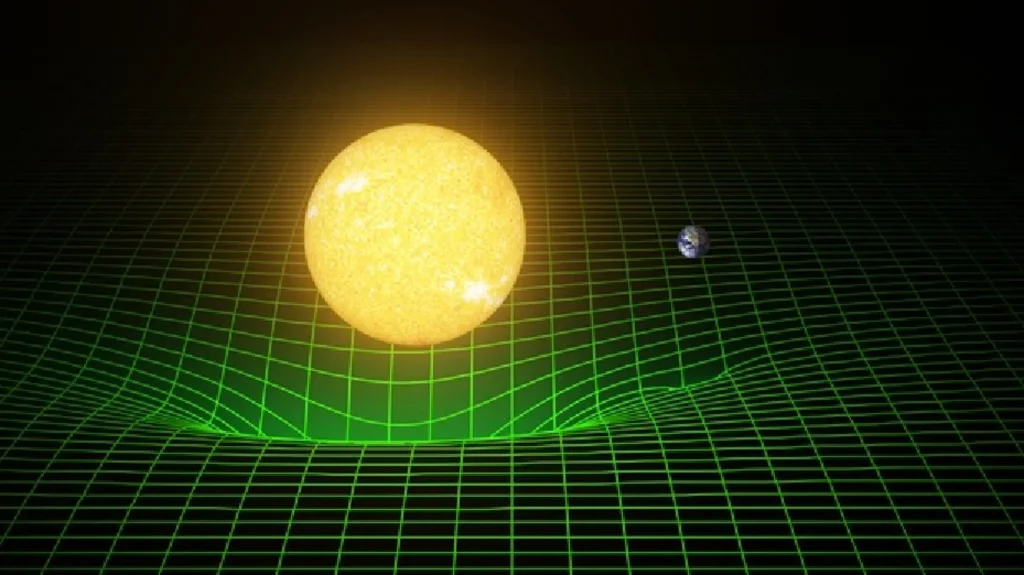This is Chapter 6 from The Man Who Mastered Gravity, now available from Amazon and fine booksellers everywhere.

(1687-1923)
Modern science finds its origins in the 17th Century – the Age of Enlightenment.
In 1687 Sir Isaac Newton published the Principia Mathematica1, his epic articulation of a fixed and stable universe where time was absolute and unbending, ticking away at the same rate for everyone, everywhere. Principia provided the foundation for an explosion of scientific knowledge in the 18th and 19th centuries.
Every discovery rests on those that went preceded it. As Newton himself said, “If I have seen farther than others it is because I have stood on the shoulders of giants.”
By the dawn of the twentieth century, the firm foundations of Newton’s universe began to tremble with the investigation of a phenomenon unknown to Newton: electricity. Electricity was not really new; it has always been present in one form or another, in the static discharge from a cold piece of metal, or the violent, radiant outburst of a lightning strike. But it was not until the 18th century that science began to master this mysterious force. Given the extent to which electricity propels the modern world, it’s curious to think it has been at our disposal for little more than 200 years – not even the blink of an eye in human history.
In the 18th century, new giants climbed on to Newton’s shoulders.
In 1752, Benjamin Franklin flew a kite into an electrical storm to capture the discharge from a bolt of lightning. In 1820 the Danish scientist Hans Christian Oersted noticed in 1820 that an electrified wire could deflect a compass needle – the first recorded observation of the linkage between electricity and magnetism. Another decade passed before the English scientist Michael Faraday inverted Oersted’s discovery, demonstrating that a magnet could induce an electrical current in a metal wire.
In the 1860s, Faraday’s protege, the Scotsman James Clerk Maxwell, compiled the equations that proved that electricity and magnetism are a single fundamental natural force, electromagnetism. Maxwell said that waves of electromagnetic energy could travel through space at the speed of light – a concept later verified by his own protégé, Heinrich Hertz, for whom radio frequencies are named. Maxwell further proposed that light itself was a form of this electromagnetic radiation – an idea that would ultimately challenge the very principals that had led him there in the first place.
At the dawn of the 20th Century, the German physicist Max Planck postulated that matter absorbs heat energy and emits light energy discontinuously: in ‘lumps.’ Planck’s lumps, which he called “quanta,” sparked the new scientific field of quantum mechanics.
The breakthrough that separated the 20th Century from all those that preceded it arrived with the ‘Annus Mirabilis’ – the year of wonders, 1905 – when Albert Einstein published not one, not two, but four papers that changed the world.
Einstein’s first 1905 paper analyzed the photo-electric effect, by which certain metals emit electrons when their surface is struck by light2. For defining the relationship between light and electrical energy, Einstein was awarded the Nobel Prize in Physics in 1921. Einstein’s second paper discussed the behavior of atoms in circumstances called ‘Brownian movements,’ proving the existence of atoms – a concept that was still hotly contested at the time.
It was actually Einstein’s third paper, On the Electrodynamics of Moving Bodies, that rearranged the paradigms of physics into an entirely new cosmology. Here was the Special Theory of Relativity that knocked Newton’s immutable universe off its foundations.
Einstein’ fourth paper, Does the Inertia of a Body Depend Upon Its Energy Content? defined the relationship between mass and energy in history’s most famous equation: E=mc2.
Newton’s enduring calculations on gravity got humans to the moon and back in the 1960s. But the ‘why’ of gravity – where it comes from and how it works – remained unexplained for another decade, when Einstein published his grandest theory of all.
In 1916’s General Theory of Relativity, Einstein defined gravity as a curvature in space, a distortion caused by the presence of a massive object like a planet or a star. Standing on the shoulders of all who had gone before him, Einstein synthesized everything from Newton to Planck, casting mankind adrift in a universe where space could be curved and distorted and time was elastic.

In the fall of 1923, eighteen-year-old Townsend Brown enrolled at the California Institute of Technology and began setting up a private laboratory at the family’s California residence in Pasadena.
Meanwhile, Albert Einstein was not done twisting the fabric of the universe. Earlier that year, he produced the first of a number of papers that dominated the remainder of his life’s work – his quest for the Unified Field Theory. Having redefined gravity, Einstein peered over the edge of the space-time continuum in search of an equation that would connect gravity with the other fundamental force of nature known at the time – electromagnetism.
Einstein had no way of knowing that on the other side or the world, a Cal Tech freshman had found the physical proof of what Einstein was still struggling to express as a theory.
- 1 Sir Isaac Newton
- Principia Mathematica (Wikipedia)
2 The photoelectric effect that Einstein articulated in 1905 is the first essential principal that led to television in the decades that followed.
